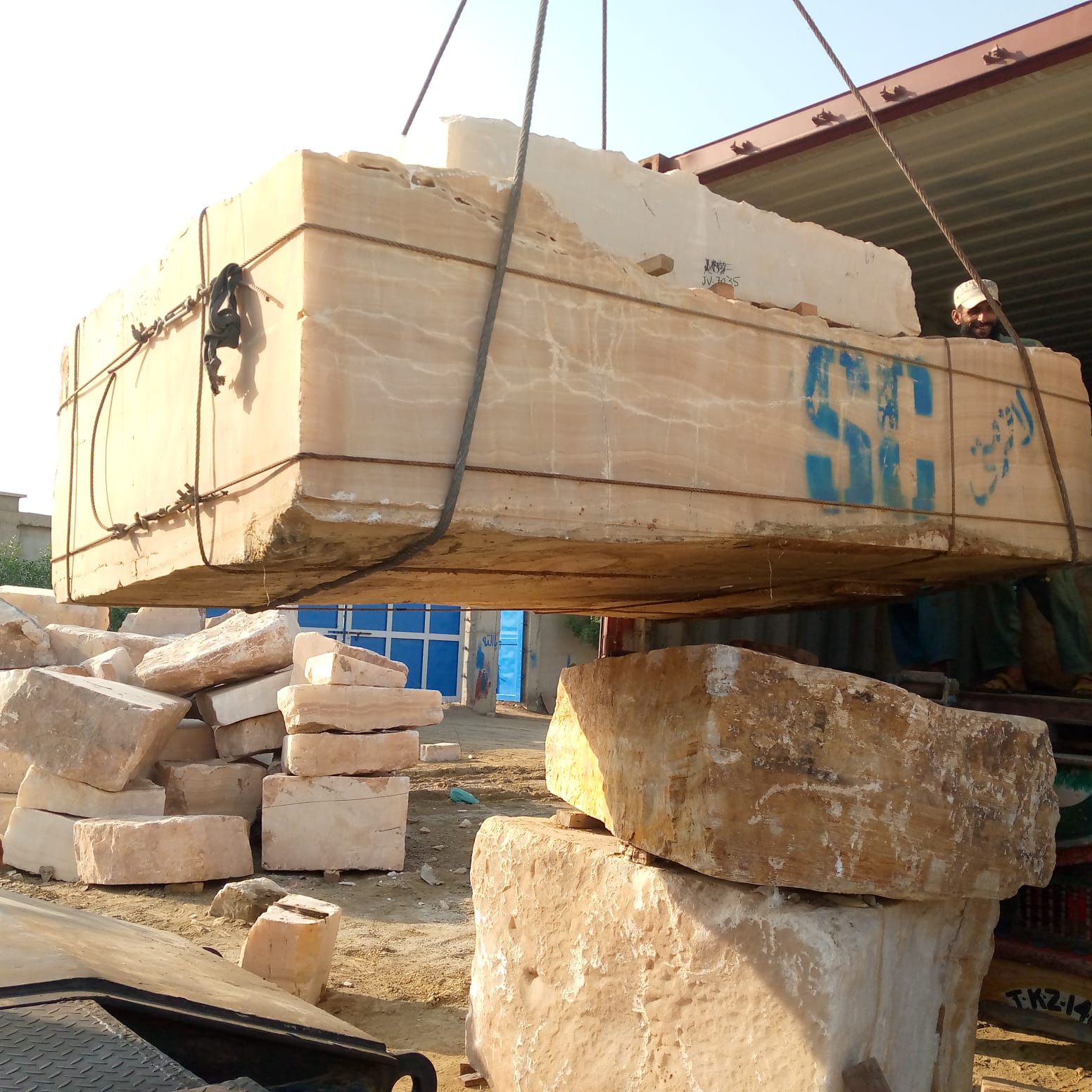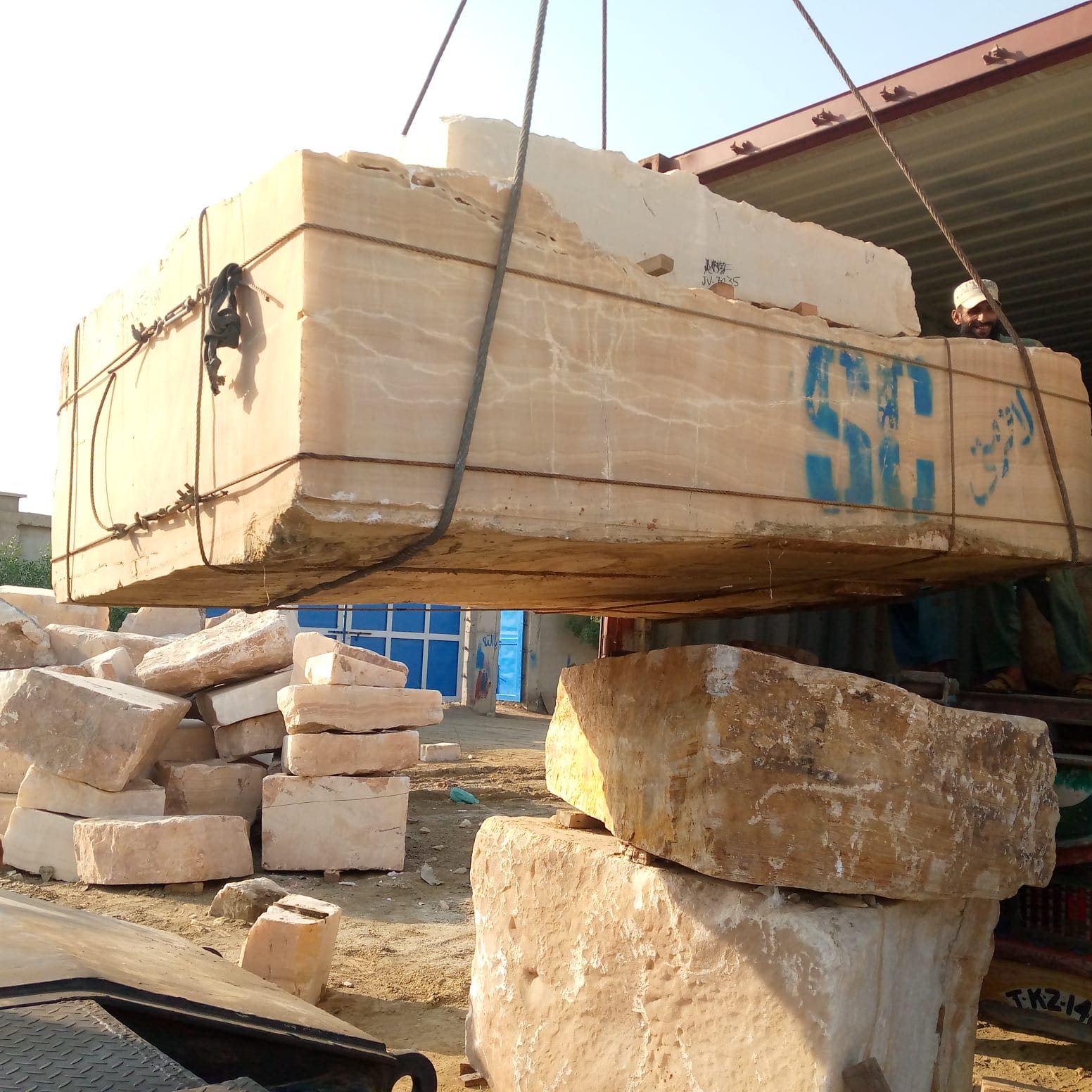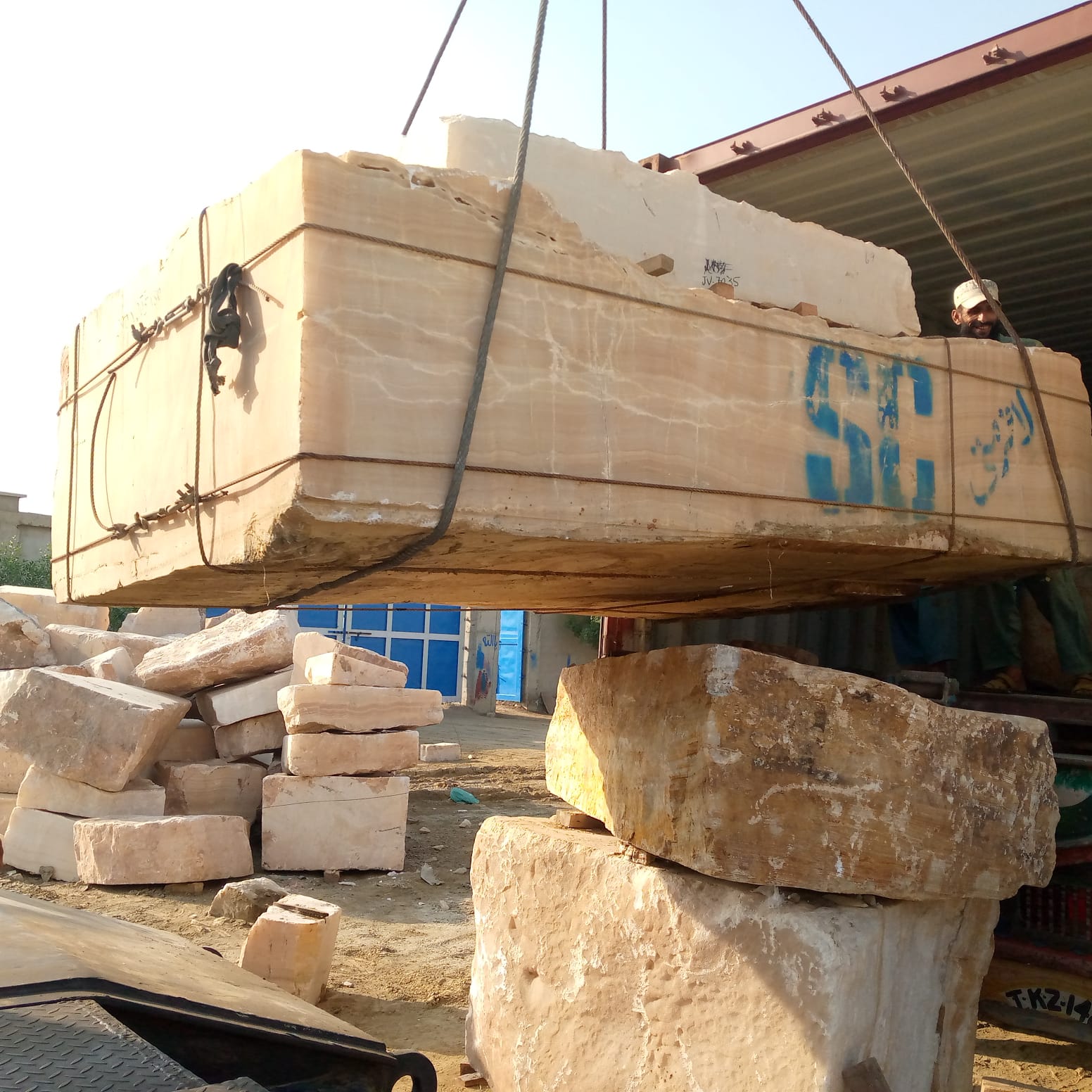
ONYX MARBLE BLOCKS
SKU : M/TONS
USD 0.01 Per Kg ( Minimum order quantity : 50000 )
Features
- Onyx is a showstopper of a stone. Used for centuries in jewelry
- carvings
- and for architectural accents
- the stone’s stunning swirls and speckles of rich
- vibrant color and unusual translucency make it an extremely sought-after material. Rarer than fine marble and highly desirable for its unique appearance. In the commercial stone industry
- onyx refers a category of stones that are made of layered bands of light-colored or translucent minerals. Most slabs of onyx are what a geologist would call banded calcite. This same material also goes by the name’s onyx marble
- Mexican onyx
- or Egyptian alabaster. Onyx is commercially classified as a sibling to marble because these two stones have the same mineral content. Onyx is made of calcite
- which is the same mineral that makes up limestone
- marble
- and travertine. In fact
- banded calcite is a close cousin of travertine and forms in a similar way.
Product Details
- Unit : Kg
- Min. Order Quantity : 50000
Onyx is a showstopper of a stone. Used for centuries in jewelry, carvings, and for architectural accents, the stone’s stunning swirls and speckles of rich, vibrant color and unusual translucency make it an extremely sought-after material. Rarer than fine marble and highly desirable for its unique appearance. In the commercial stone industry, onyx refers a category of stones that are made of layered bands of light-colored or translucent minerals. Most slabs of onyx are what a geologist would call banded calcite. This same material also goes by the name’s onyx marble, Mexican onyx, or Egyptian alabaster. Onyx is commercially classified as a sibling to marble because these two stones have the same mineral content. Onyx is made of calcite, which is the same mineral that makes up limestone, marble, and travertine. In fact, banded calcite is a close cousin of travertine and forms in a similar way. While granite, quartzite, and marble are all forged deep within the earth’s crust, onyx is born right on the surface. Onyx forms from spring water or groundwater that has an abundance of calcite dissolved in it. When this water emerges at the mouth of a spring, the minerals precipitate out and build a crust of calcite crystals. Over time, more water flows by and more minerals settle out. The variations between the layers are caused by differences in the water flow rate and small amounts of impurities. In its most pure state calcite is white or clear, but it’s easily tinted by minor amounts of other minerals. The most common color of onyx is a warm honey color, which is caused by iron oxide. The flowing layers of onyx reflect subtle variations in the spring water and add an artistic quality to the patterns and bands. Slabs of onyx are made by slicing down into the layers, revealing thousands of years of deposits. Onyx can also form inside caves or in other openings in bedrock. Veins of banded calcite can be found in fractured limestone, or even in volcanic rocks. Basically, beautiful formations of crystals can be created anywhere that mineral-laden groundwater flows. All it takes is the happenstance to discover the underground cache. Travertine is formed in the same manner as onyx. The main difference between travertine and onyx is that travertine has a porous, lace-like texture while onyx is smooth and non-porous. Aside from that, the two stones are similar.
- SKYCLAN GROUP
- SKYCLAN GROUP
- KARACHI
- PLOT NO. 58-C 4TH FLOOR BADAR COMMERCIAL STREET NO. 12, PHASE-V, EXTENSION, DHA KARACHI, PAKISTAN, Karachi, Sindh
- 03109888837
- https://skyclangroup.com/
- https://www.facebook.com/people/SkyClan-Group/61560464013439/
- https://www.instagram.com/skyclangroup2018/
Submit Your Review
Please login to submit your review.
More Products From This Vendor
More Products
ONYX MARBLE BLOCKS


